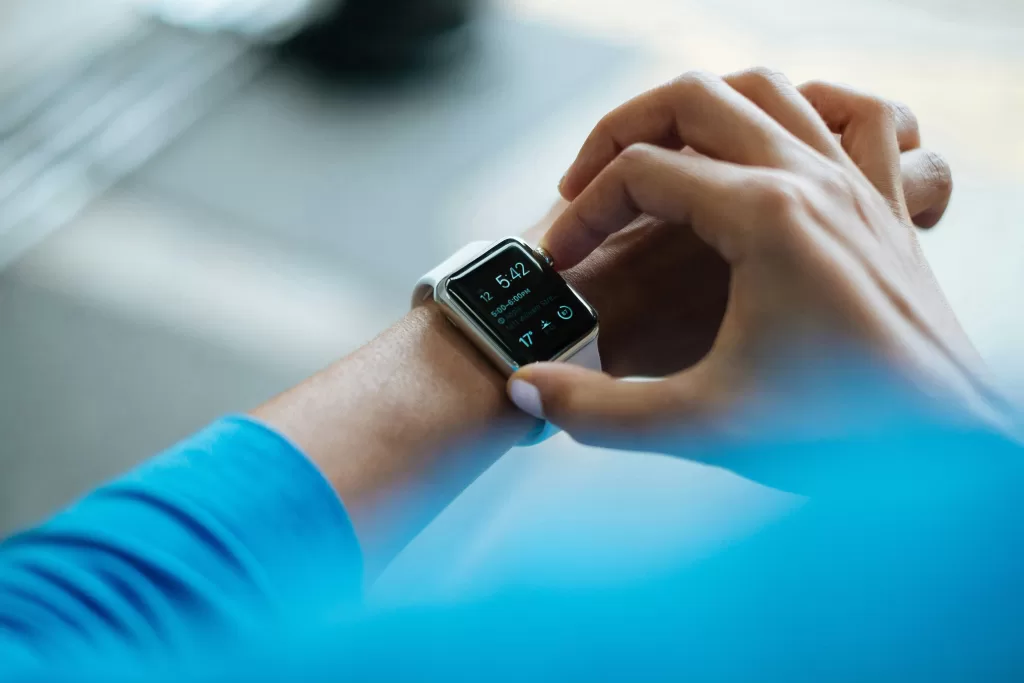In the fast-paced world of media, where attention spans are fleeting and headlines compete for supremacy, one communication tool stands tall: the press release.
It’s the authoritative whisper that echoes through newsrooms, the spotlight-stealer that compels journalists to take notice. But what exactly is a press release?
A press release is an official statement (written or recorded) that an organization issues to the news media and beyond.
Whether you’re a new executive, a budding entrepreneur, or a seasoned PR pro, join us on this exhilarating journey as we unravel the art and science of a truly captivating and effective press release. Get ready to make headlines that resonate and stories that leave an indelible mark.
Clear and Compelling Headline
Crafting attention-grabbing headlines is an art that requires a balance of creativity, clarity, and relevance.
Characteristics of an effective headline
Concise
An effective headline is succinct, capturing the essence of the news in a few words. It avoids unnecessary industry jargon or complex phrases that may confuse or bore readers.
Attention-Grabbing
A compelling headline uses strong, captivating language to instantly grab the reader’s attention. It employs powerful verbs, adjectives, or intriguing questions to pique curiosity.
Clear and Specific
A good headline conveys the main message or news angle of the press release. It avoids vague or ambiguous language, providing a clear indication of what the press release is about.
Relevant
An effective headline aligns with the interests and needs of the target audience and the media and news outlets that it targets. It addresses a timely or significant topic and offers value to readers.
Accurate
A reliable headline accurately represents the content of the press release. It avoids misleading or exaggerated claims, ensuring that readers get what they expect when they delve into the press release.
Tips for crafting attention-grabbing headlines
Know Your Audience
Understand the interests, preferences, and needs of your target audience. Craft a headline that speaks directly to them, using language and tone that resonate with their interests.
Use Action Words
Incorporate strong verbs that evoke emotion or convey a sense of urgency. Action words can infuse energy into the headline and compel readers to continue reading.
Spark Curiosity
Pose a thought-provoking question or hint at something intriguing within the headline or lead paragraph. By creating a sense of curiosity, you entice readers to explore further.
Highlight Unique Benefits
Emphasize the unique value or benefits offered in the press release. What makes the news or information exceptional? Communicate that in the headline to captivate readers.
Experiment with Formats
Play with different headline formats, such as lists, statistics, or controversial statements. Test different approaches to see which ones garner the most attention and engagement.
Keep it Simple
Avoid overly complex or technical language that may confuse readers. Aim for simplicity while still conveying the essence of the news or message.
By adhering to the characteristics of effective headlines and implementing these tips, you can increase the chances of your press release standing out in a sea of information and capturing the interest of journalists and readers alike.
Concise and Informative Summary
The summary of a press release serves as a concise snapshot that encapsulates the key points and main message of the entire document.
It provides journalists and readers with a quick overview of the press release’s content, enabling them to grasp the essential details without having to read the entire document.
A well-crafted summary acts as a hook, enticing readers to delve deeper into the press release and increasing the chances of media coverage.
Guidelines for writing a concise and engaging summary
Capture the Essence: Focus on distilling the core message and most important information of the press release. Identify the key takeaways from most press releases and highlight them in the summary.
Be Succinct: Keep the company description and the summary brief and to the point. Aim for a length of one or two to three paragraphs sentences. Avoid excessive details or unnecessary fluff.
Engage the Reader: Use clear and compelling language to grab the reader’s attention. Craft the summary or full story in a way that creates curiosity and encourages further reading.
Include Relevant Details: While keeping the summary concise, ensure that it includes essential and pertinent details, such as the who, what, when, where, and why of the news or announcement.
Use Active Voice: Employ active voice and strong verbs to convey a sense of action and urgency. This adds dynamism to the summary and makes it more engaging.
Maintain Consistency: Ensure that the summary aligns with the tone and style of the press release. Consistency helps to create a cohesive narrative and reinforces the key message.
By adhering to these guidelines, you can craft a summary that effectively communicates the core information of your press release concisely and engagingly.
A well-written summary enhances the overall impact of your press release and increases the likelihood of capturing the interest of journalists and readers.
Strong and Engaging Opening Paragraph
The opening paragraph of a press release holds immense power. It serves as the gateway to capturing the reader’s attention and setting the tone for the entire press release.
A compelling opening paragraph not only hooks the reader but also conveys the significance and relevance of the news or announcement.
It is the make-or-break moment that determines whether the reader continues to explore the press release or moves on to something else.
Crafting a strong opening paragraph is essential for maximizing the impact of the first line of your press release.
Techniques for hooking the reader from the start
Start with a gripping statement or statistic: Begin the opening paragraph with a powerful statement, surprising statistic, or intriguing fact that immediately grabs the reader’s attention. This captivates their interest and encourages them to keep reading.
Pose a thought-provoking question: Engage the reader by posing a compelling question that resonates with their curiosity. This not only creates intrigue but also encourages them to seek answers within the press release.
Tell a captivating story: Begin with a short anecdote or narrative that relates to the main news or announcement. This personalizes the content and helps the reader connect with the press release on an emotional level.
Highlight the immediate impact or benefits: Emphasize the immediate impact or benefits of the news or announcement in the opening or the first sentence or paragraph. This showcases the relevance and value of the press release right from the start, compelling the reader to continue reading to learn more.
Use vivid language and descriptive imagery: Paint a vivid picture with descriptive language that appeals to the reader’s senses. This creates a sense of immersion and captivates their imagination, making the press release more engaging.
By utilizing these techniques, you can craft an opening paragraph that captivates the reader’s attention, sparks their curiosity, and compels them to delve deeper into the press release.
Remember, the opening paragraph sets the stage for the entire press release, so invest time and creativity in making it strong and impactful.
Newsworthy and Relevant Content
For a press release to be effective, it needs to be newsworthy. Identifying the right angle and topic that will capture the attention of journalists and the target audience is crucial. Consider the following factors when determining the newsworthiness of your press release:
Timeliness: News of immediate release that is recent and timely tends to be more newsworthy. Is your press release announcing something happening now or shortly?
Impact: Does your press release have a significant impact on a specific industry, community, or group of people? Highlighting the importance and potential consequences of the news increases its newsworthiness.
Uniqueness: Is your press release offering something different or unique? Novelty and originality can make your news stand out from the crowd and attract media attention.
Relevance: Is the topic of your press release relevant to current trends, events, or issues? Tying your news to a larger context or addressing a topic of public interest enhances its newsworthiness.
Ensuring the relevance of the press release to the target audience
It is crucial to ensure that your press release is relevant to your target audience. Consider the following tips to make your next press release more audience-centric:
Understand your audience: Gain insights into the interests, preferences, and needs of your target audience. Tailor your press release to resonate with their concerns and provide value to them.
Address your client’s customers’ pain points or aspirations: Identify the pain points or aspirations of your target audience and highlight how your news or announcement addresses those issues or fulfills their desires.
Customize the messaging: Craft your press release with language, tone, and examples that resonate with your target audience. Speak their language and align the content with their specific interests.
Demonstrate relevance and benefits: Communicate why your news or announcement matters to your target audience. Highlight the benefits, solutions, or opportunities it offers to them.
By ensuring your product launch or press release is newsworthy and relevant, you increase your chances of gaining media coverage and capturing the attention of your target audience.
Clear and Structured Body
To ensure the clarity and effectiveness of your press release, it is crucial to organize the information logically and coherently. Here are some key points to consider:
Organizing information in a logical and coherent manner
Start with the most important information: Begin the body of your press release by providing the essential details and main points upfront. This helps grab the reader’s attention and ensures that critical information is not buried.
Follow a logical flow: Arrange the information in a logical sequence, presenting it in a way that makes sense to the reader. Consider using chronological order, cause-and-effect structure, or problem-solution framework, depending on the nature of your news or announcement.
Maintain a coherent narrative: Connect the different sections and paragraphs of your press release cohesively. Use transitional phrases or sentences to guide the reader smoothly from one point to another across several paragraphs, ensuring a seamless reading experience.
Using subheadings and bullet points for clarity
Incorporate subheadings: Breaking down your press release into distinct sections with clear subheadings enhances readability and allows readers to quickly scan for the information they find most relevant. Subheadings also provide an organizational structure that aids comprehension.
Utilize bullet points or numbered lists: When presenting a series of related points or key details, consider using bullet points or numbered lists. This formatting style helps to highlight important information, improves readability, and ensures that key takeaways are easily identifiable.
By organizing your press release’s body in a clear and structured manner, you enable readers to quickly grasp the main points and key details. This approach enhances the overall comprehension and impact of your press release.
Quotes and Expert Opinions
Incorporating quotes and expert opinions into your press release is essential for adding credibility and a human touch to your content. Here’s why it matters:
Adding credibility and a human touch to quotes
Including quotes from reputable sources, such as company executives or industry experts, lends credibility to your press release. These quotes provide external validation and demonstrate the significance of your news. Moreover, quotes add a personal element to your press release, making it more relatable and engaging for readers.
Obtaining and including relevant expert opinions
Seek out subject matter experts within your industry or field who can provide valuable insights related to your news or announcement. Conduct interviews or request statements to gather their perspectives and opinions. Incorporate these expert quotes into your press release to offer additional context and expertise to your audience.
By incorporating quotes and expert opinions, you enhance the credibility of your press release while adding a human touch and expert insights. This not only strengthens the impact of your communication but also captures the attention of journalists and resonates with your target audience.
Supporting Facts and Data
Supporting your claims with facts and data is essential for adding credibility to your press release. Here’s why it matters:
Backing up claims with facts and statistics:
- Enhances credibility: Including factual data establishes trust and credibility with your audience.
- Provides context and clarity: Facts and statistics offer a deeper understanding of the topic and the significance of your news.
- Adds objective evidence: Data allows readers to evaluate the information and draw their conclusions.
Incorporating data to enhance credibility:
- Use reputable sources: Include data from reliable sources such as industry reports or research studies.
- Highlight key findings: Select the most relevant and impactful data points that support your press release’s message.
- Provide context: Explain the meaning and significance of the data to help readers interpret its relevance.
By including supporting facts and data, you strengthen the credibility of your press release and provide valuable information to your audience.
Contact Information and Media Resources
Relevant media contact information and details that should be included for further inquiries are;
- Media contact: Provide name, position, phone number, and email address for media inquiries.
- Company contact: Include details of a person who can address general inquiries or provide further assistance.
Supplementary media resources
- High-resolution media: Offer downloadable links to high-quality images or videos for journalists to use.
- Additional documents: Provide links to relevant research papers or fact sheets for more information.
By including contact information and providing access to media resources, you facilitate inquiries and provide additional materials supporting information for journalists and readers.
Proofreading and Editing
Proofreading is crucial to ensure that your press release is error-free and maintains a professional image. It involves reviewing your content for spelling, grammar, punctuation, and formatting errors.
Effective proofreading detects and corrects errors, improves clarity and coherence, and enhances professionalism.
Tools and techniques for effective editing
To edit your press release effectively, consider these tools and techniques:
- Manual review: Carefully read through your press release, line by line, to catch errors, improve sentence structure, and enhance overall clarity.
- Spell-checking tools: Use built-in spell-checkers in word processors or dedicated software to identify and correct spelling errors.
- Grammar and style checkers: Utilize grammar and style-checking tools to ensure grammatical accuracy and adherence to the preferred writing style.
- Peer review: Seek feedback from colleagues or trusted individuals to gain fresh perspectives, identify potential improvements, and receive constructive criticism.
By giving importance to proofreading and utilizing appropriate editing tools and techniques, you can refine your press release, eliminate errors, and ensure effective communication of your message.
Formatting and Distribution
Best practices for formatting press releases:
- Use clear headings and subheadings to organize your content effectively.
- Follow a standard press release format with a headline, dateline, body paragraphs, and contact information.
- Incorporate formatting elements like bullet points and quotes to highlight key information.
- Maintain readability by using a legible font, appropriate font size, and sufficient white space.
Strategies for effective distribution and dissemination
Target media outlets, journalists, organizations involved, and influencers relevant to your press release.
Utilize press release distribution services to reach a wider audience.
Publish your press release on your website and share it through social media channels.
Engage with journalists and readers by promptly responding to inquiries, news stories, and comments.
Conclusion
In summary, a good press release incorporates several key elements to ensure its effectiveness.
These elements include a clear and compelling headline, a concise and informative summary, a strong opening paragraph, newsworthy and relevant content, a clear and structured body, quotes and expert opinions for credibility, supporting facts and data, contact information for inquiries, and links to supplementary media resources.
Mastering press release writing skills are essential for successful communication and public relations. By implementing these press release elements well, you can enhance the impact of your press releases and effectively engage your target audience.
FAQ’S
Q: What are the characteristics of a good press release?
A: A good press release is newsworthy, offering timely and compelling information, while also being concise and clear in its messaging to capture attention and convey the main points effectively.
Q: What are the first three elements of a press release?
A: The first three elements of a press release are the headline, which grabs attention, the dateline which provides the location and date, and the introduction/lead paragraph which presents essential information and sets the tone for the release.


